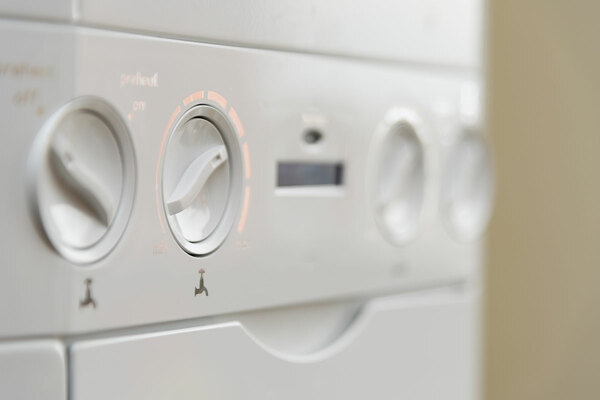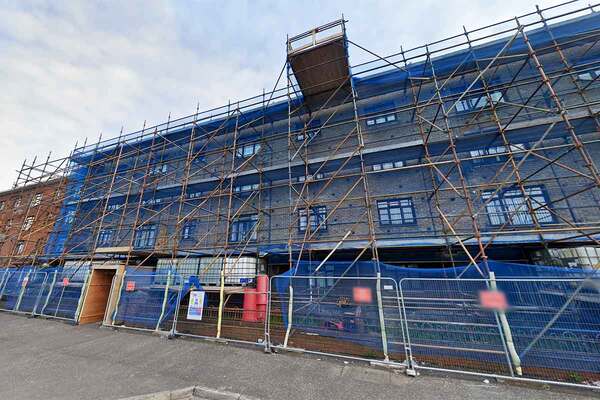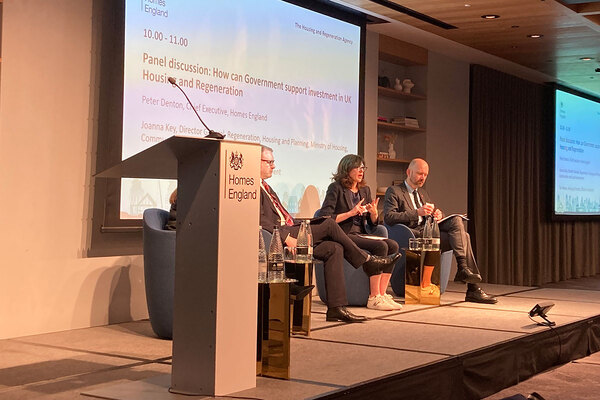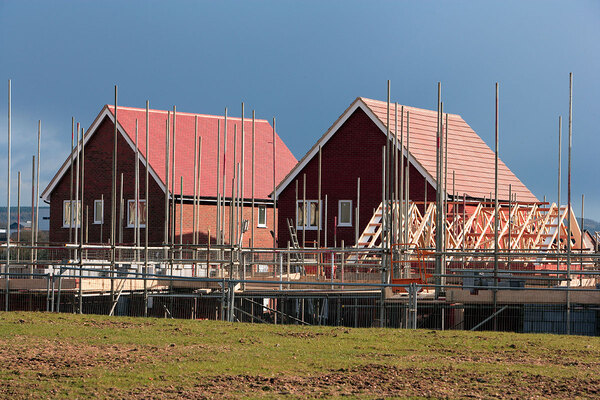Why Midland Heart’s new development project is already achieving the Future Homes Standard
Homes that meet the Future Homes Standard are being built before it is implemented. Inside Housing, in association with manufacturer H+H, asks experts how the project will inform future housebuilding
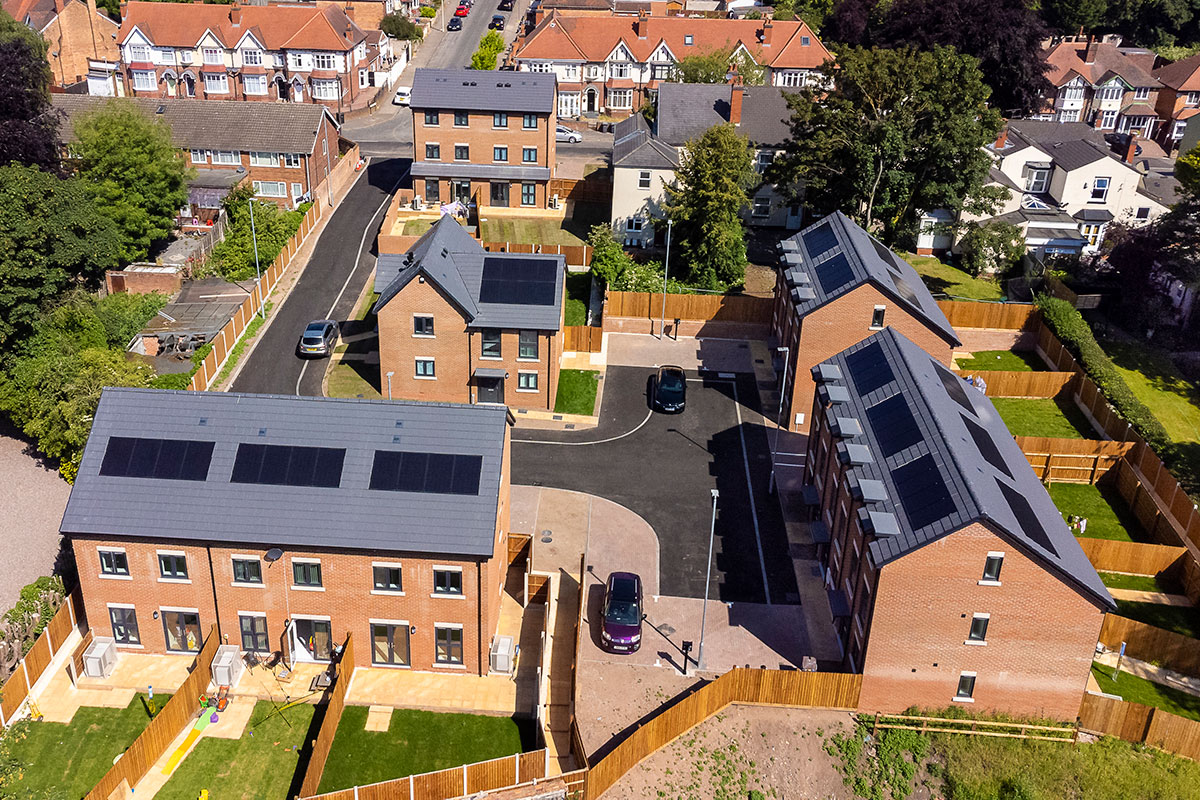
In association with:

In the Midlands, a project is under way to create homes that meet the Future Homes Standard – three years before it is formally introduced. Tony Hopkin, head of construction, quality and innovation at Midland Heart; David Boyd, professor of construction at Birmingham City University; Amos Rodrigues, building solutions manager at H+H; and Mike Leonard, visiting professor of manufacturing and construction at Birmingham City University, discuss the aims of Project 80 and the impact they hope it will have on the sector.
When was Project 80 conceived? What is the rationale behind it?
TONY HOPKIN: The concept of delivering a scheme that modelled meeting the Future Homes Standard was conceived and discussed internally at Midland Heart in early 2020. By August 2020, we had identified a suitable site and were starting the process of going out to tender. By March 2021, we had appointed contractor Tricas Construction, started on site, and gained the research expertise of Birmingham City University. We also had support from a range of key suppliers which then formed a steering group. The name Project 80 refers to our aims of an 80% reduction in carbon dioxide emissions and developing around 80 homes that meet the Future Homes Standard.
DAVID BOYD: Midland Heart understood the far-reaching implications of the Future Homes Standard on low energy and carbon requirements, and the comfort and economic needs of their tenants. They wanted to be ahead of developments and to build now so that their properties do not need upgrading soon.
Which methods of meeting the Future Homes Standard will the project be testing?
TH: To date we have two schemes that are modelling the Future Homes Standard as part of Project 80: Eco Drive in Handsworth, Birmingham, and Elvetham Road in Edgbaston. Across those we have three different fabric solutions; four different heating and hot water solutions; and other low and zero-carbon technologies. The differing specifications allow us to maximise our understanding of the ways in which to meet the standard, further enhancing our learning from Project 80.
AMOS RODRIDGUES: We feel that many add-on technologies can be used to improve energy efficiency, but the starting point must be the fabric of the building.
MIKE LEONARD: We decided to design the project to look at and compare a number of ways of meeting the Future Homes Standard. It is designed to provide a platform to research the entire process of delivering homes to the standard, with a strong focus on the residents’ experience.
DB: The houses have higher insulation, lower air permeability and very efficient heating from electric heat pumps. The ventilation arrangements have also been assessed in detail. The project shows that meeting the Future Homes Standard does not require extraordinary changes in design or construction, but instead working collaboratively on the detail.
How has the project progressed to date?
TH: Compared with the early days, it has evolved to become a research project. We are keen to understand the different ways of complying with the standard and the implications for us and residents as we strive to deliver homes that are good for both the environment and the people who will live in them. We are also looking to help the wider sector by disseminating our findings. Eco Drive, the first phase of the project, completed recently. Elvetham Road is progressing well and is due to complete in September, with both plots for affordable rent.
Tony Hopkin is head of construction, quality and innovation at Midland Heart, an association that provides more than 30,000 affordable homes across the Midlands.
He has been in the industry for 15 years, holding roles at contractors and the National House Building Council. He is a visiting lecturer at the University of Reading, teaching innovation in construction.
How is the success of different approaches used during the project being assessed?
DB: Birmingham City University is undertaking a comprehensive case study of the design and construction, which will include how difficulties were overcome, what the additional cost of the construction was, and what extra embodied carbon is required to attain the operational energy benefits. After monitoring the occupier’s comfort, energy use and indoor environmental quality, a further report will be produced that evaluates the performance benefits of the design and equipment enhancements. It will also estimate the cost benefits of each of these. This detailed analysis will form part of a submission to government about the Future Homes Standard.
TH: We will be undertaking comprehensive monitoring of the performance of the homes (both occupied and unoccupied) for at least 12 months. We will monitor the energy use of each individual circuit within the home, the temperature within the home and multiple indoor air-quality parameters. We are also undertaking post-occupancy evaluations with the residents and capturing feedback from contractors and those involved within the construction of the home to ensure that any learning opportunities are documented. A detailed cost analysis will be completed as well, to identity any areas in which value for money can be improved.
What learning and knowledge do you hope the project will bring to the sector?
TH: Our ambition is that Project 80 can understand key methods, building types and technologies that can be used to meet the standard. Based on that understanding, we aim to create key considerations around successfully meeting the standard, which will be both useful to us and the wider industry. We are also happy to work with others who are trying similar things, to broaden our collective understanding and learn from each other.
DB: Birmingham City University became involved in Project 80 so that learning can be transferred to the government and industry. It is a great opportunity to produce high-impact, socially valuable research, but also to help policymakers, the construction industry and occupants learn about how to create better houses. House performance is an interaction between occupant lifestyle, the house fabric and layout, and the heating and ventilation services installed. The environmental monitoring and occupant interviews in Project 80 allow us to understand performance in relation to design, but also help occupants to live cost-effectively
in comfort.
ML: This first phase of homes will have been completed three years ahead of the implementation of the Future Homes Standard. This is a first in the recent history of regulatory changes in this area. The extensive research that is part of Project 80 will provide the government and policymakers with the evidence they need to make the right choices and avoid unintended consequences from the new standard.
AR: Experience has taught us that there are always new technologies that seem very attractive to developers, but the lack of track record presents real problems when asked to predict how they will behave over months and years. We believe a fabric-first approach ensures that you optimise the savings that are already available to you. This has always been an intuitive position of many developers, but to have this documented and measured will allow for others to learn from this experience.

